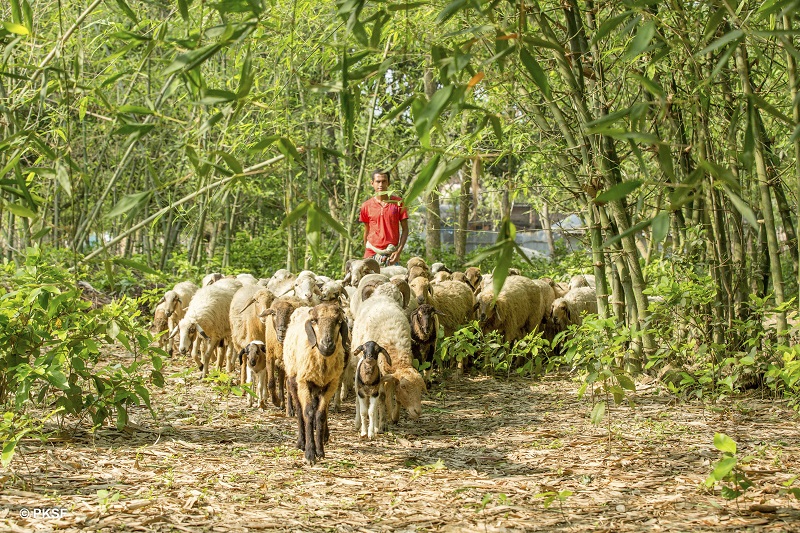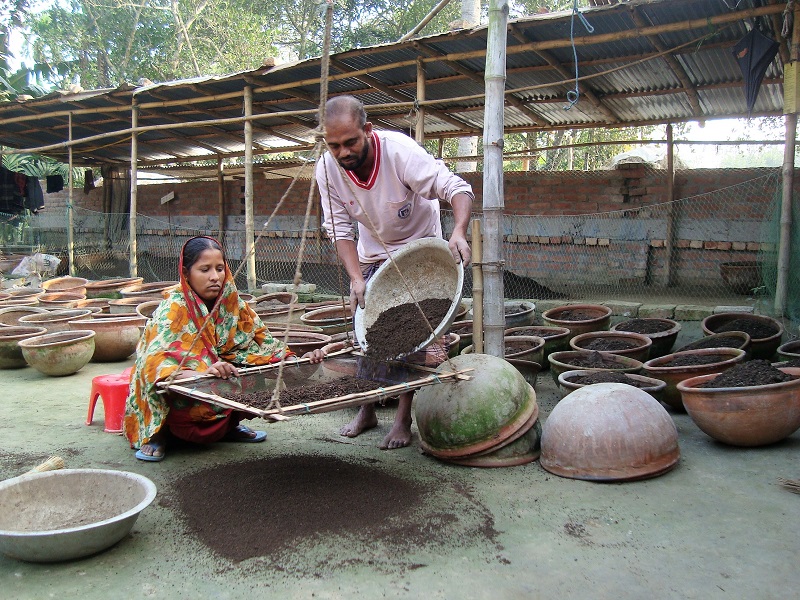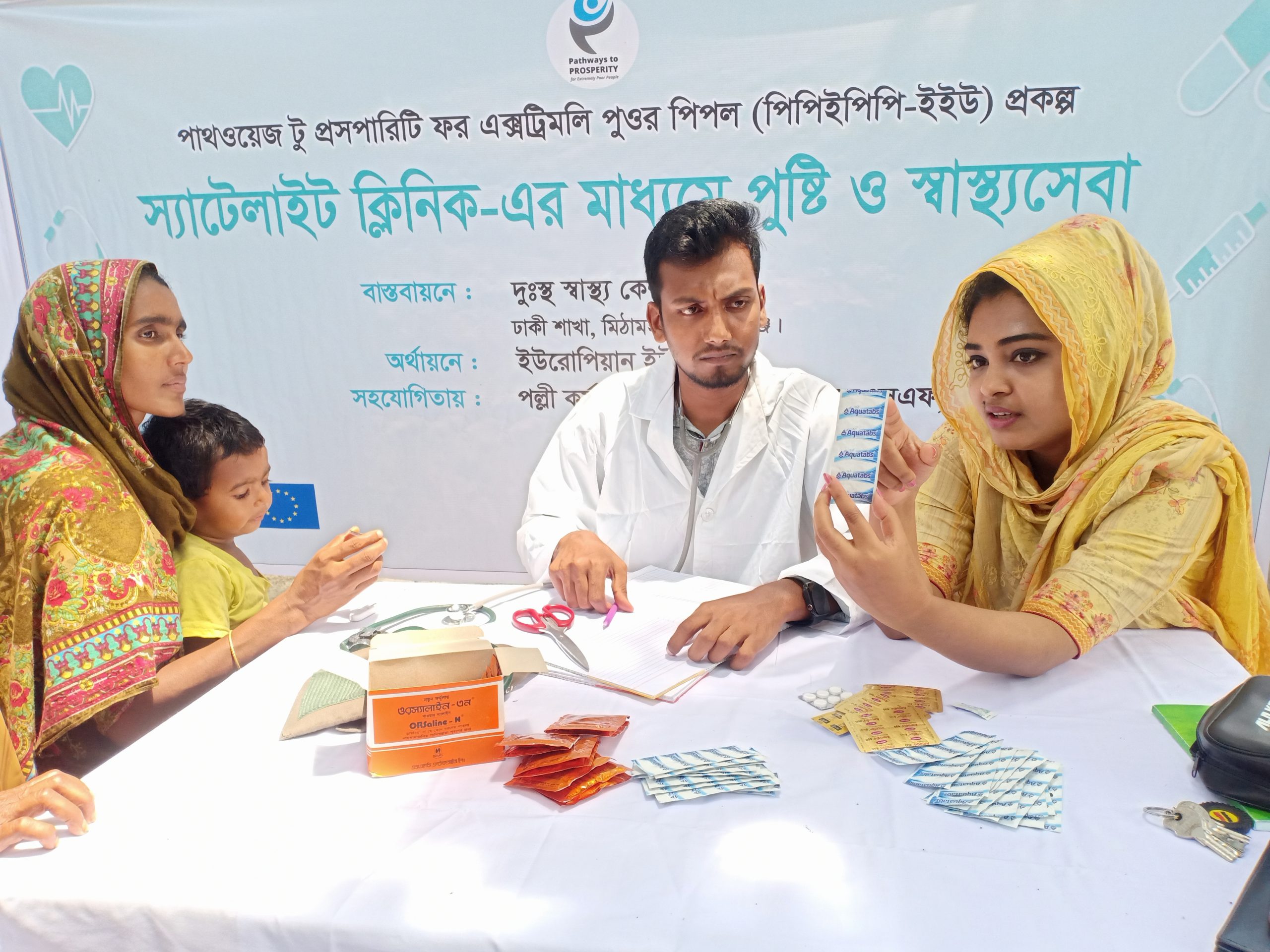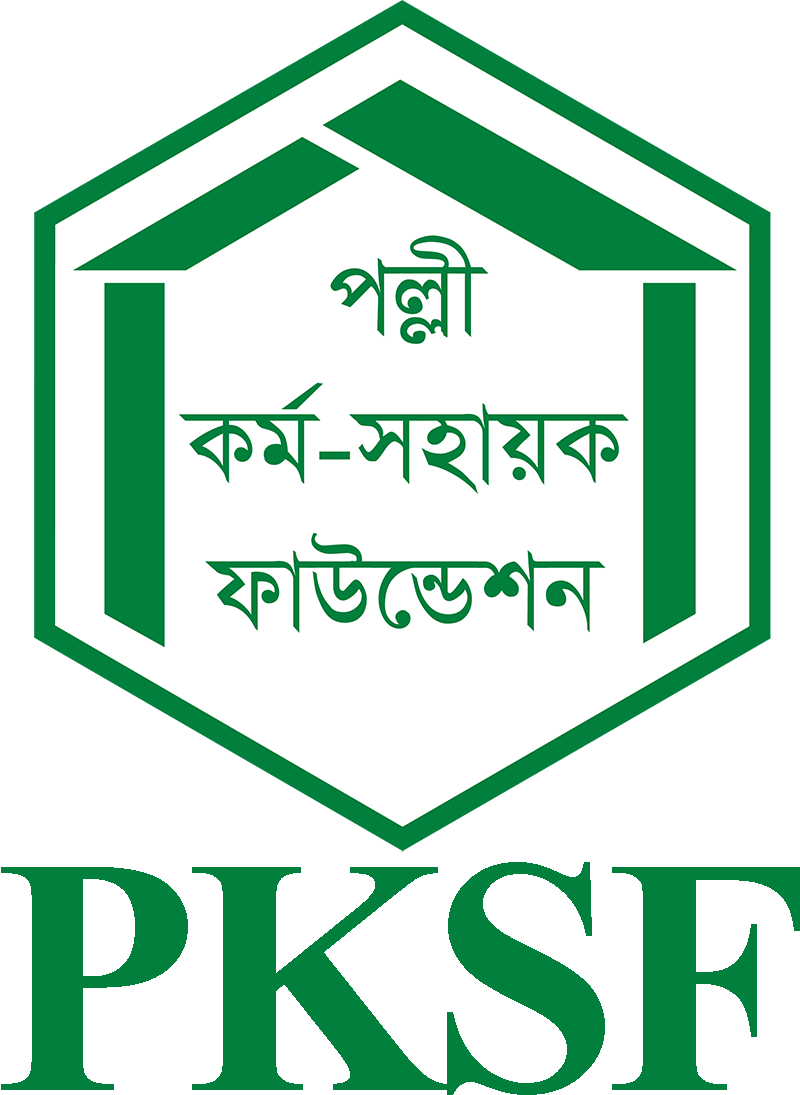PKSF: Relentless in Alleviating Multidimensional Poverty
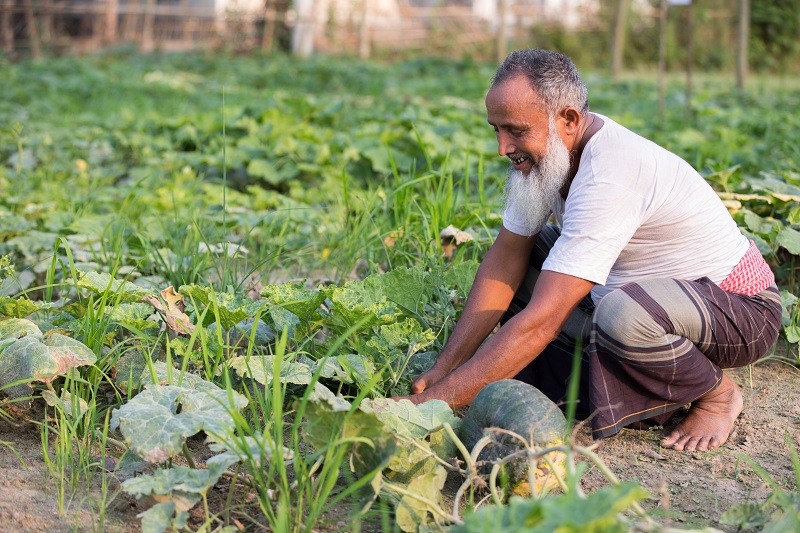
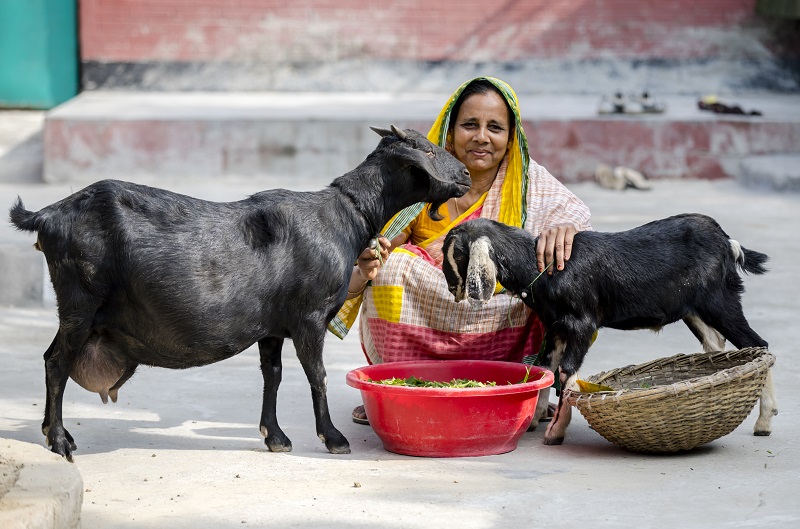
As PKSF began its journey in 1990, the first program it launched was named 'Rural Microcredit' (later renamed ‘Jagoron’)
As PKSF began its journey in 1990, the first program it launched was named ‘Rural Microcredit’ (later renamed ‘Jagoron’).The objective was to create employment opportunities for the rural poor. Given the field demands, PKSF subsequently diversified its financial assistance programs. PKSF’s ground experience suggests that poverty reduction programs in general reach out to the moderate poor, but do not effectively serve the poorest of the poor. In 2002, PKSF took up a project titled ‘Financial Services for the Poorest (FSP)’, supported by the World Bank, to assess whether the extremely poor are bankable. Lessons from this project revealed that they indeed were capable of successfully using the financial assistance in income-generating activities if the terms of repayment were flexible and appropriate to their needs. This learning prompted PKSF to initiate Ultra Poor Program (UPP) allowing the flexibilities required. In the later years, as PKSF moved more forward with its human-centric mission, the UPP was renamed ‘Buniad’ introducing further flexible terms for the extremely poor.
Monga is an obsolete word in the press or in the development literature of Bangladesh
Monga is an obsolete word in the press or in the development literature of Bangladesh. It was a pitiful element of the history of poverty of this country, more focally in the north during the months of September-October. There had been efforts from various development actors including the government with relief measures but there took place no lasting effect to end the sufferings of the ultra-poor, many of whom used to live a kind of subhuman life. PKSF came forward to offer a substantial answer with its special program – Programmed Initiatives for Monga Eradication (PRIME) — with its own funding in 2006. The answer lay in creating their purchasing capacity with year-round employment opportunities. Again, the motive behind this program was not just minimizing their sufferings but to give them some confidence that as human beings they can help out themselves. Initially, PRIME started working in the Monga-affected extreme poverty-prone northern districts. Later, the project was expanded to southwestern coastal regions battered by cyclones Sidr and Aila in 2007 and 2009 respectively. With Promoting Financial Services for Poverty Reduction (PROSPER), a similar program, PKSF tried to achieving the same, serving the ultra-poor in establishing their dignity.
While the core support of PRIME rested on financial services (flexible microfinance), it evolved gradually as a holistic extreme poverty alleviation program responding to the multidimensional nature of poverty.
Under PRIME, PKSF offered flexible loans to create year-round wage-based employment and self-employment opportunities for the extreme poor. Members were gradually provided skill development to ensure the sustainability of income-generating activities and primary healthcare to improve their health and nutrition status.
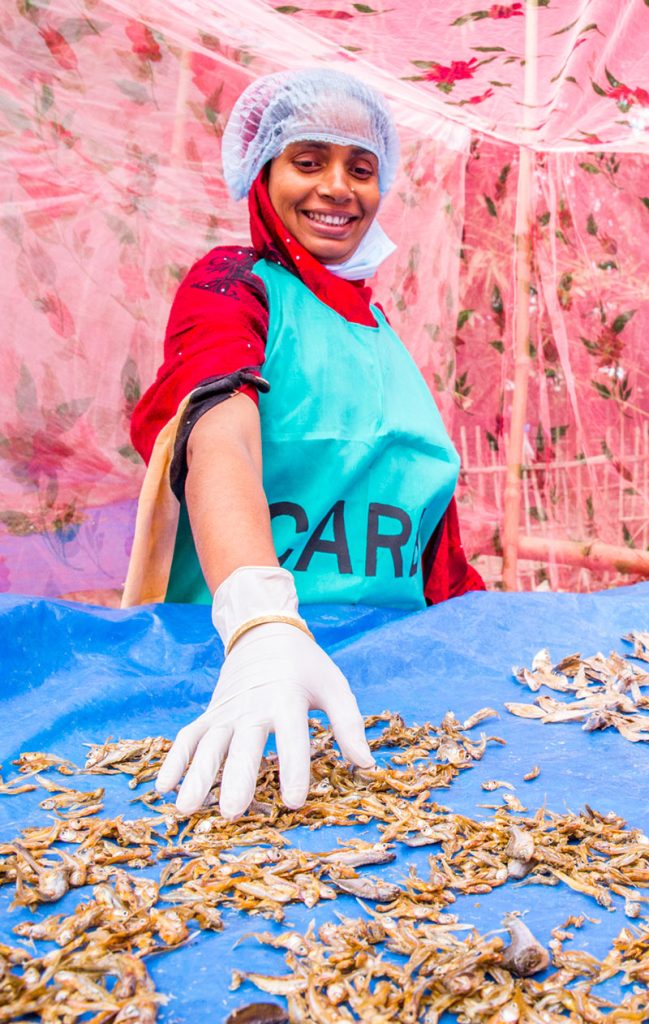
PRIME made significant positive impacts on employment, income, food security, social integration and resilience to different kinds of shocks in extreme poor households.
PRIME’s impact study by the Institute of Inclusive Finance and Development (InM) reveals that the PRIME model is an effective tool for reducing both economic and multi-dimensional poverty of the extreme poor living in the most vulnerable areas of the country. It indirectly contributed to women empowerment too. A study by DFID showed that PRIME is the least costly and yet most effective extreme poverty program in Bangladesh.
Between 2007 and 2011, PKSF implemented Microfinance Support Intervention for FSVGD and UP Beneficiaries Project to ensure food security and to improve the living conditions of extreme-poor people. Under the project, extreme-poor people were provided skills training for employment and Income Generating Activities.
As part of the continued support for extreme poor people, PKSF initiated Ultra Poor Programme (UPP-Ujjibito) from 2013-2019, which covered 3.25 lakh extreme poor households of 28 districts, with focus on livelihoods, nutrition and women empowerment. The impact analysis of the project showed a real difference in poverty alleviation.
As part of its strategic plan to reduce extreme poverty, PKSF classifies extreme poor people into 16 sub-categories.
In another path-breaking PKSF program – Learning and Innovation Fund to Test New Ideas (LIFT: 2006) the objective was to explore innovative initiatives that accelerate pro-poor growth. Upholding the fundamental motto of SDGs – leaving no one behind – LIFT undertakes special initiatives for inclusive development of the extreme poor people within the subcategories, including elderly people, persons with disabilities, Dalits and Bede communities, ethnic minority people, people of the third gender, and those living in haor and char areas.
Climate change is one very terrible factor that perpetuates poverty in the natural disaster-prone areas. To face such challenges, adaptation-related initiatives under LIFT help foster resilient livelihoods and good health, especially for the coastal poor.
With lessons learnt from different extreme poverty projects of PKSF and other similar national programs, PKSF has undertaken a multi-dimensional project titled Pathways to Prosperity for Extremely Poor People (PPEPP).
Funded by FCDO (formerly DFID) and EU, the project was launched in 2019. The thrust of PPEPP is on the eradication of extreme poverty through a new transformational approach going beyond the traditional poverty graduation model.
The project covers some 2.5 lakh extreme poor households (nearly 10 lakh people) living in selected poverty-prone districts located in the northwestern Char area, the southwestern coastal belt and Haor region in the northeast of Bangladesh. In addition, the project covers some ethnic minority pockets in Dinajpur and Thakurgaon districts. The project addresses the multidimensional nature of poverty and adopts a holistic approach. PPEPP’s interventions centre on livelihoods, nutrition, community mobilization, disaster and building up resilience against the negative impacts of climate change. The integrated components of the project enable target households to develop a resilient livelihood strategy that supports larger and more sustained income and consumption gains and to reduce climate shocks and other vulnerabilities. It also aims to grow and transform potential livelihoods into business clusters through providing selective value chain interventions. Community mobilization acts as a development strategy for the socio-economic development of the backward communities.
PKSF emphasizes on poverty grounded in gender inequality. It addresses gender dimensions which is a key to sustainable alleviation of extreme poverty. The PPEPP considers women from the target households as prime participants of the economic activities. The project also aims at changing familial and societal attitudes that constrain extreme poor women’s choices in life and control over their own resources.
